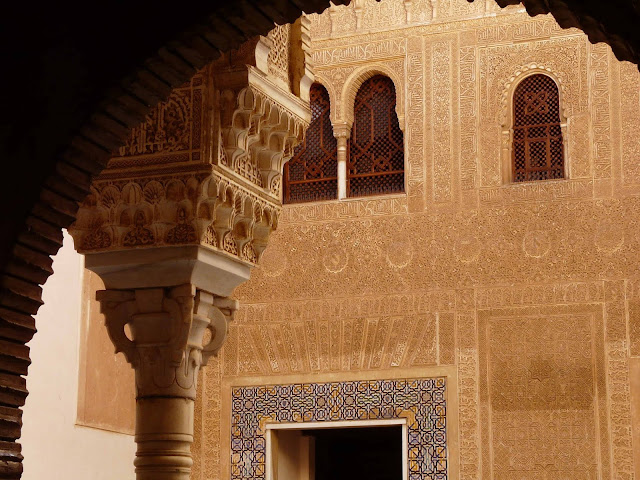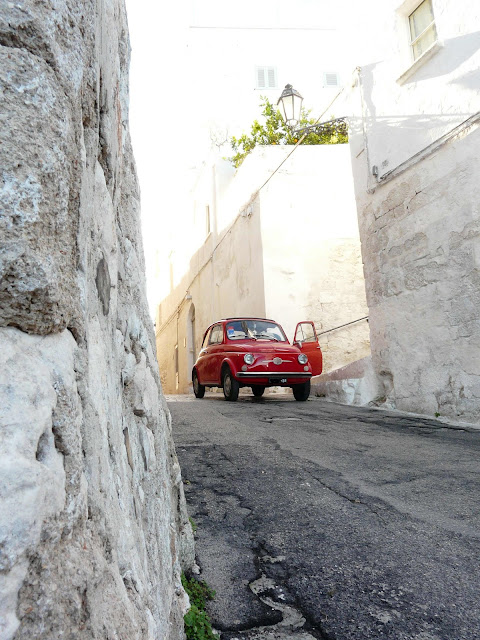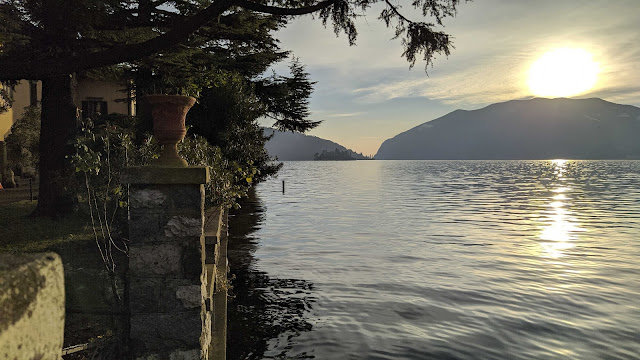Salento in October - Ciolo and Santa Maria di Leuca and Centopietre
On Friday we get off to an early start. I pop 2 minutes down the road to the nearby bakery and come back with two pasticotti, still warm, for breakfast and we are soon ready and driving along the quiet Salento country roads. Our first stop is at the Ciolo bridge. It’s not much past 9 o’clock and it’s finally a splendid day – sunny and warm, but there are very few people around. It’s easy to park and we walk across the famous bridge. It’s 23 metres high but seems higher to me, especially with the deep blue sea below. Andrea looks down, I don’t so much!
We set off to the right of ristorante l’Incanto along the Sentiero delle Cipolliane. It’s a splendid landscape, the stone walls of the countryside to the left and Mediterranean undergrowth all around and the rocks and deep blue sea and sky to the right.Heavenly! We were a little dubious about the walk because of Andrea’s knee, but the weather and environment are big motivators, so we continue cautiously. It’s not a difficult path, unless you’ve got a dodgy knee, in which case be careful, although it requires decent shoes, not a hiking sandal let alone a flipflop place. The most uneven part is the first part heading north towards Santa Maria Novaglie. As the path progresses it improves and there are a few serviceable benches and a very pleasant picnic area near the detour to the Grotte Cipolliane. We don’t detour. We meet about 10/15 people coming in the other direction and despite caution, a slow pace and lots of stops for photos (the heavy rain of the previous week means that there are even some flowers blooming) and just to look at the coast and the sea, in about 50 minutes we reach the other end of the path. It’s a weekday in October and the road above is quiet, so we decide to walk back that way, which takes about 15 minutes. It wouldn’t be a good idea in high season when there’s a lot of traffic. An excellent start to the day.
From there we continue by car to Santa Maria di Leuca and park at Punta Mèliso at the Sanctuary which is next to the lighthouse. We have visited before, many years ago. The nicest part is the sanctuary from the outside and the views of Santa Maria di Leuca below and from the top of the Monumental waterfall (dry) and monumental steps which mark the end of the aquedotto pugliese Apulian Aqueduct. Work on this famous aqueduct began in 1906, was interrupted at the beginning of the First World War and resumed afterwards. It was completed, arriving in Leuca, in 1939.
It’s getting on for lunchtime, so we drive down to Santa Maria di Leuca, find a parking space easily and stop for a snack type lunch at Martinucci, which in the SML version is none too clean and none too friendly.But a rustico for Andrea, a calzone fritto for me and half a lemon and almond pasticiotto (disappointing) each are enough calories to keep us going, possibly due to the enormous breakfast time pasticotti. After coffee, we walk the few metres down to the lungomare and head west. It’s a very pleasant seafront. SML has a rocky coast which means very few beach clubs (although those few are actually built on the rocks) and a great sea view. The weather is still warm and sunny which helps. We walk up to Punta Ristola - the extreme heel of Italy. We sit a while to admire the view and the small boats taking tourists to see the sea caves below. And then walk back to SML.
Another interesting thing about the town is the local architecture: Leuca is famous for its 19th-century villas, built in various styles, mostly by the architects Ruggieri and Rossi. Towards the end of the 19th century, there were 43 villas, although many are now abandoned or now look very different compared to their former glory. During World War II, many villas were stripped of their decorative metal elements (balustrades, railings, etc.) for weapon production. However, a few still retain their original appearance and it’s another reason to wander the streets and explore. We especially like Villa Daniele, Villa Mellacqua and the Bishop's Villa as well as the colours of Villa Maruccia.
Originally, all the villas, independently of the various architectural features, had the following elements in common: a park in front of the villa, a vegetable garden/orchard at the rear, a private chapel with an image of the Madonna, a well for collecting drinking water, a stable for horses and a carriage house. The carriage house/stables in Villa Meridiana part of the Caorli hotel is used for tastings and so we can look inside. For the others, we peer through railings and take some photos.The Chiesa di Cristo Re is also relatively modern in the sense that building began in 1896, and this too was designed by engineer Pasquale Ruggieri but it was completed and opened only in 1935. Built of carparo stone, it is in Romanesque and Gothic style with three naves, a nice mosaic floor, and a rose window.
We have pretty much explored the most important things in SML so we drive in the direction of Patù and the Centopietre.
It isn’t easy to find, one of the access roads is closed due to work in progress and at one point we are squeezing through some narrow streets when I spot an interesting alley and park. It runs out to be the very small centre of the very small Borgo Terra – the historical nucleus of Castrignano del Capo, the municipality which includes Patù, SML and other hamlets.
After lots of left right stop and continue we draw up outside the Centopietre. I am so so pleased to see the gate is open as well as the door to the the church of San Giovanni Battista in front. Various reviews had mentioned it was often closed and it’s nearly mid-October but we were lucky. Centopietre is very strange, I’ve never seen anything quite like it and therein lies the fascination. The name Centopietre is due to the fact that it was originally composed of exactly one hundred (today 99) blocks of limestone rock from the nearby Messapian city of Vereto. It dates back to the 9th century and was built as a sepulchral mausoleum for General Geminiano, a messenger of peace killed by the Saracens immediately before the final battle of Campo Re on 24 June 877, at the foot of the Vereto hill.
Inside there used to be several overlapping layers of frescoes with sacred subjects, dating back to the 14th century, which have now unfortunately been almost completely lost due to damp and mould. It’s still fascinating.
In front, the other gem is the 6th century church of San Giovanni Battista built of tuff stone. The interior has three naves, divided by rectangular pillars supporting round arches and traces of frescoes, perhaps depicting St. John the Baptist. It’s ancient, simple and beautiful and I’m so grateful to have found it open.
Our last stop is at another beautiful church - Santa Marina del Casale di Ruggiano. It’s in another quiet setting, a few houses, the countryside just beyond. The first striking element is the façade which is double: the two internal naves correspond to two portals bearing Rococo-decorated epigraphs, and above them two oval windows framed by decorations in the same style.
Inside the church is noteworthy because of the almost naif frescoes around the altar of St. Marina dating back to 1645. Traces of frescoes from different periods can also be seen on the walls of the church: a medieval Christ on the Cross; vases with flowers and Rococo ornamental decorations on the counterfacades and around the portals. It’s unexpected in the middle of the countryside and very nice indeed.
On the way back we stop at the Oleificio of Sant’Eligio and buy some Terra d’Otranto D.O.P EVO oil. Half of the mosquito population of the Salento awaited for our legs in the Spaccio….but never mind. We go ‘home’ for some fabulous ricotta di pecora and possibly the best mozzarella I’ve ever tasted from the shop down the road from our lodgings. Our last destination is inevitable – down to the sea we go – to Torre San Giovanni for the sunset, a walk along the beach and to buy some fish before going home.
A fantastic day in beautiful Salento!




















Comments
Post a Comment